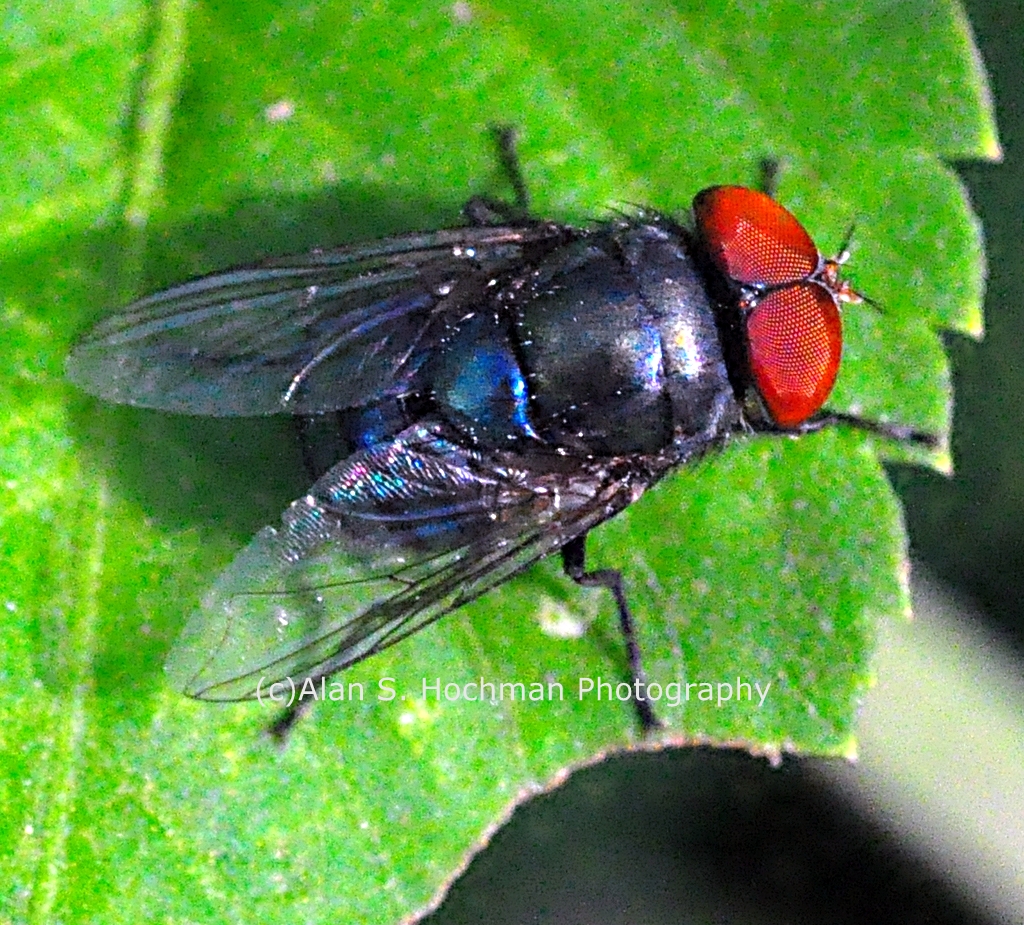WILDLIFE PHOTOGRAPHY – ENCHANTED FOREST PARK, FL
This is an extreme closeup photograph of a fly that was taken at Enchanted Forest Park off of NE 135th Street in North Miami, Florida. The gear used in this closeup photograph of a fly was a Nikon D90 camera body attached to a Nikkor 60mm 2.8 lens and a Tamron 2x teleconverter plus a macro light ring for enhanced illumination.
Notice the fresnel lens on the eyes of this fly.
True flies are insects of the order Diptera (from the Greek di = two, and ptera = wings). They possess a pair of wings on the mesothorax and a pair of halteres, derived from the hind wings, on the metathorax. Apart from secondarily flightless insects (including some flies), the only other order of insects with any form of halteres are the Strepsiptera, and theirs are on the mesothorax, with the flight wings on the metathorax.
The presence of a single pair of patent, metathoracic flight wings distinguishes true flies from other insects with “fly” in their names, such as mayflies, dragonflies, damselflies, stoneflies, whiteflies, fireflies, alderflies, dobsonflies, snakeflies, sawflies, caddisflies, butterflies or scorpionflies. Some true flies have become secondarily wingless, especially in the superfamily Hippoboscoidea, or among those that are inquilines in social insect colonies.
Flies are adapted for aerial movement, and typically have short and streamlined bodies. The first tagma of the fly, the head, consists of ocelli, antennae, compound eyes, and the mouthparts (the labrum, labium, mandible and maxilla make up the mouthparts). The second tagma, the thorax, bears the wings and contains the flight muscles on the second segment, which is greatly enlarged; the first and third segments have been reduced to collar-like structures. The third segment of the thorax bears the halteres, which help to balance the insect during flight. A further adaptation for flight is the reduction in number of the neural ganglia, and concentration of nerve tissue in the thorax, a feature that is most extreme in the highly derived Muscomorpha infraorder.
Because no species of fly has teeth or any other organ or limb that allows them to eat solid foods, flies consume only liquid food or finely granular foods, such as pollen, and their mouthparts and digestive tracts show various modifications for such diets. Female Tabanidae use knife-like mandibles and maxillae to make a cross-shaped incision in the hosts’ skin and then lap up the blood. The gut includes large diverticulae, allowing the insect to store small quantities of liquid after a meal.

Closeup of a Fly at Enchanted Forest Park http://t.co/T5iQPql6
Closeup of a Fly at Enchanted Forest Park http://t.co/tkoqsVIW #featured #flies #fly #insect #insects via
Lovely photographs and very interesting to see the wildlife of Florida.
Thank you Melanie. I live not too far away from the Everglades. I never know what I’ll see when I get there!
There’s even beauty to be found in a fly, if we only take time to look.
Looks like a Black Fly. Wonderful photo I must say. hope it didnt bite you lol
Some people “Point n Shoot”.
I Shoot n Run